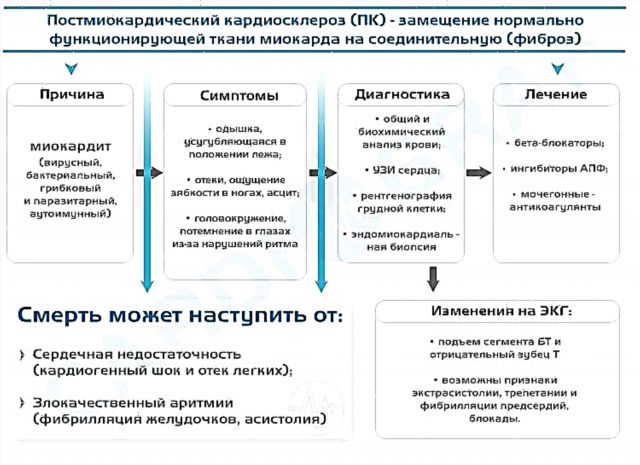Angina is an infectious disease caused by various bacteria or viruses. The most common causative agents of infection are staphylococcal or streptococcal bacteria. Depending on the state of the immune system, the disease can be mild, limited to a banal reddening of the throat, or be complicated by purulent formations on the tonsils. In this regard, the follicular form of angina is distinguished. The main difference between this form of the disease is the presence of purulent foci, which indicates the presence of inflammation in the glands.
Causes of the disease
The main causative agent of the disease is hemolytic streptococcus, less often staphylococci and Escherichia coli become the cause of the disease. Bacteria can enter the tonsils in several ways:
- by airborne droplets, falling on the mucous membrane of the larynx from the outside;
- with blood, along with which the infection is transmitted from various foci of inflammation present in the body.
Is angina contagious? Of course yes. But most often the causes of the disease are hypothermia or other factors that can cause a sharp weakening of the immune system. A decrease in the protective functions of the body provokes an activation of the infection. Indeed, pathogenic microorganisms are often present in the human body, which, under unfavorable conditions for them, are in an inactive stage. Chronic tonsillitis is one of the reasons for the constant presence of streptococci on the tonsils. Therefore, it is extremely important to carry out the correct and timely treatment of diseases of the nasopharynx, in order to avoid the development of angina.
Important! Chronic tonsillitis is the main cause of bacterial sore throat in adults.
Let's list those factors that are unfavorable for the body's defense system and can cause the activation of pathogenic bacteria:
- bad habits;
- hypothermia;
- recent viral or bacterial infections;
- Unhealthy Lifestyle.
Most often, children suffer from follicular angina, it is also contagious for the elderly, and those who have a weakened immune system. This list also includes people with chronic tonsillitis, pregnant women, those who have recently undergone chemotherapy or surgery.
Ways of transmission of sore throat
This disease is transmitted by airborne droplets, like most viral and bacterial infections. Therefore, sore throat is extremely contagious. Despite the fact that with angina, such symptoms such as cough and runny nose, the patient's saliva contains a large number of pathogenic microorganisms. Therefore, the infection is transmitted through common dishes, hygiene items, food, kisses.
symptoms such as cough and runny nose, the patient's saliva contains a large number of pathogenic microorganisms. Therefore, the infection is transmitted through common dishes, hygiene items, food, kisses.
However, these ways of spreading sore throat are most often found in children whose immune system is not yet familiar with the new infection, and therefore cannot fully resist the disease. Adults often develop follicular angina as a result of exacerbation of chronic diseases, such as tonsillitis, or due to the migration of bacteria from other foci of inflammation.
Important! A person with a weakened immune system is more susceptible to disease.
Symptoms of the disease
The incubation period of this disease is usually several days after contact with the carrier of the infection. As a result of hypothermia or in the presence of other factors that weaken the immune system, the incubation period is reduced to one or two days, because the infection is transmitted very quickly.
As for the clinical picture, the symptoms of bacterial sore throat in adults are more pronounced than in children. Among the most common symptoms are:
- rapid development of the disease;
- sore throat, aggravated by swallowing;
- hoarseness;
- lack of appetite;
- significant increase in body temperature;
- weakness, headache;
- swollen lymph nodes.
On average, the disease lasts for a week. Follicular angina is always accompanied by a significant increase in body temperature. If we analyze the clinical blood test, then in the process of the disease there is a sharp increase in leukocytes, as well as a significant increase in the rate of erythrocyte sedimentation rate.
After a visual examination, there is swelling of the tonsil tissues and severe redness of the throat. The surface of the tonsils is covered with yellow or grayish-white purulent formations, resembling a match head in appearance and size. Further development of the disease provokes rupture of the follicles and the appearance of white plaque on the tonsils.
Correct treatment of bacterial sore throat necessarily includes antibiotic therapy, as well as symptomatic treatment aimed at relieving the condition and lowering body temperature.
Important! Together with the disappearance of symptoms and the normalization of body temperature, the disease is no longer contagious.
Most often, relief of symptoms can be expected within a couple of days after starting treatment. Recovering in adults with an unweakened immune system occurs already on the fifth or sixth day, while children can get sick for seven to ten days.
Important! Incorrect or untimely treatment of angina often leads to complications!
Possible complications and methods of diagnosing the disease
It is known that the virus itself, which causes sore throat, is dangerous only for pregnant women, because the high intoxication of the body as a result of the disease can cause irreparable harm to the fetus. However, angina carries a danger of its complications for any person. Most often, complications arise in situations where treatment was untimely or was absent altogether. In such conditions, pathogenic microorganisms not only continue their development in the glands, but can also provoke inflammation of other organs and tissues.
As practice shows, there are usually no difficulties in making a diagnosis. Most often, the patient independently diagnoses a sore throat. The most informative signs of the disease are:
- characteristic clinical manifestations;
- complaints of the patient himself;
- examination of the mucous membrane of the nasopharynx.
Also, when making the correct diagnosis, laboratory tests such as a clinical blood test and smears from the surface of the tonsils are quite informative.
Methods for treating the disease
Independently, without consulting a doctor, it is permissible to use only non-drug methods of treatment that help alleviate the symptoms of the disease.
Important! Self-medication of bacterial sore throat is dangerous due to the high likelihood of complications.
It is also important to remember that angina is a contagious disease, so young children and people with weakened immunity should be isolated from the patient as much as possible. In addition to the use of antibiotics for angina, there is no other alternative treatment. However, at the first signs of illness or as a prophylaxis, the following recommendations can be used:
- observe bed rest;
- consume a large amount of liquid in any form;
- follow a diet, eating light and low-fat foods.
Alkaline mineral water, warm and plentiful drink, vitamin diet, rest - all this will contribute to a speedy recovery, significantly reducing the likelihood of complications.
Preparations for the treatment of angina
Angina is contagious, as it is transmitted not only by airborne droplets, but also by household. Therefore, there are no effective ways to protect against disease. Follicular tonsillitis should be treated comprehensively, with the obligatory use of antibiotics.After all, this is the only way to eliminate streptococcal infection.
The minimum course of antibiotics is usually five to seven days. It is impossible to reduce or interrupt antibiotic therapy on your own, even after the sore throat becomes non-infectious and the main symptoms of the disease disappear.
Important! The course of antibiotic treatment cannot be canceled by the patient on his own, even after the symptoms of the disease have completely disappeared.
Gargling is an effective remedy to speed up recovery. After all, it is this procedure that is able to remove purulent follicles, remove plaque and reduce local symptoms.



